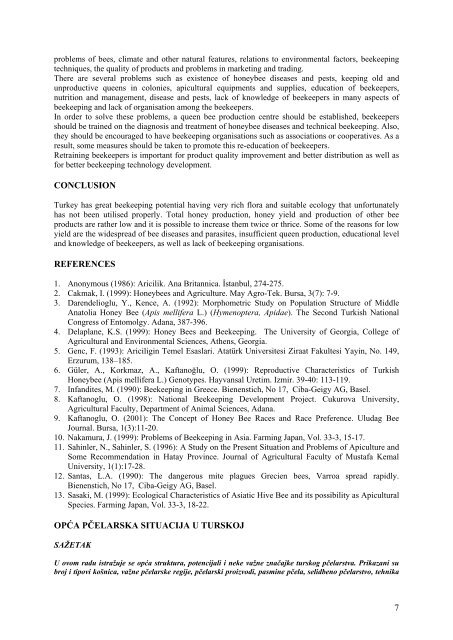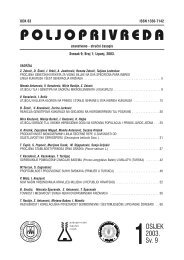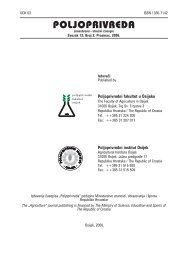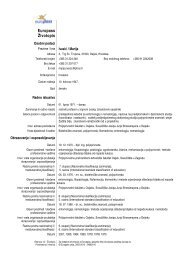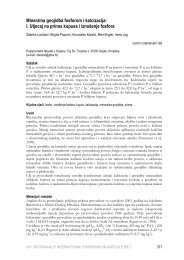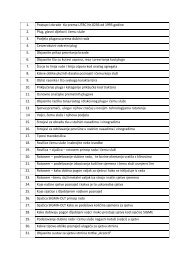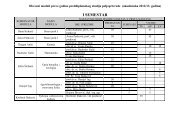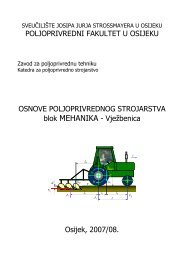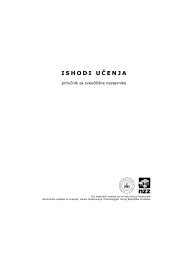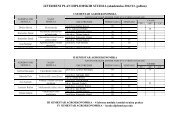1 THE GENERAL APICULTURAL SITUATION OF TURKEY ...
1 THE GENERAL APICULTURAL SITUATION OF TURKEY ...
1 THE GENERAL APICULTURAL SITUATION OF TURKEY ...
You also want an ePaper? Increase the reach of your titles
YUMPU automatically turns print PDFs into web optimized ePapers that Google loves.
problems of bees, climate and other natural features, relations to environmental factors, beekeeping<br />
techniques, the quality of products and problems in marketing and trading.<br />
There are several problems such as existence of honeybee diseases and pests, keeping old and<br />
unproductive queens in colonies, apicultural equipments and supplies, education of beekeepers,<br />
nutrition and management, disease and pests, lack of knowledge of beekeepers in many aspects of<br />
beekeeping and lack of organisation among the beekeepers.<br />
In order to solve these problems, a queen bee production centre should be established, beekeepers<br />
should be trained on the diagnosis and treatment of honeybee diseases and technical beekeeping. Also,<br />
they should be encouraged to have beekeeping organisations such as associations or cooperatives. As a<br />
result, some measures should be taken to promote this re-education of beekeepers.<br />
Retraining beekeepers is important for product quality improvement and better distribution as well as<br />
for better beekeeping technology development.<br />
CONCLUSION<br />
Turkey has great beekeeping potential having very rich flora and suitable ecology that unfortunately<br />
has not been utilised properly. Total honey production, honey yield and production of other bee<br />
products are rather low and it is possible to increase them twice or thrice. Some of the reasons for low<br />
yield are the widespread of bee diseases and parasites, insufficient queen production, educational level<br />
and knowledge of beekeepers, as well as lack of beekeeping organisations.<br />
REFERENCES<br />
1. Anonymous (1986): Aricilik. Ana Britannica. İstanbul, 274-275.<br />
2. Cakmak, I. (1999): Honeybees and Agriculture. May Agro-Tek. Bursa, 3(7): 7-9.<br />
3. Darendelioglu, Y., Kence, A. (1992): Morphometric Study on Population Structure of Middle<br />
Anatolia Honey Bee (Apis mellifera L.) (Hymenoptera, Apidae). The Second Turkish National<br />
Congress of Entomolgy. Adana, 387-396.<br />
4. Delaplane, K.S. (1999): Honey Bees and Beekeeping. The University of Georgia, College of<br />
Agricultural and Environmental Sciences, Athens, Georgia.<br />
5. Genc, F. (1993): Ariciligin Temel Esaslari. Atatürk Universitesi Ziraat Fakultesi Yayin, No. 149,<br />
Erzurum, 138–185.<br />
6. Güler, A., Korkmaz, A., Kaftanoğlu, O. (1999): Reproductive Characteristics of Turkish<br />
Honeybee (Apis mellifera L.) Genotypes. Hayvansal Uretim. Izmir. 39-40: 113-119.<br />
7. Infandites, M. (1990): Beekeeping in Greece. Bienenstich, No 17, Ciba-Geigy AG, Basel.<br />
8. Kaftanoglu, O. (1998): National Beekeeping Development Project. Cukurova University,<br />
Agricultural Faculty, Department of Animal Sciences, Adana.<br />
9. Kaftanoglu, O. (2001): The Concept of Honey Bee Races and Race Preference. Uludag Bee<br />
Journal. Bursa, 1(3):11-20.<br />
10. Nakamura, J. (1999): Problems of Beekeeping in Asia. Farming Japan, Vol. 33-3, 15-17.<br />
11. Sahinler, N., Sahinler, S. (1996): A Study on the Present Situation and Problems of Apiculture and<br />
Some Recommendation in Hatay Province. Journal of Agricultural Faculty of Mustafa Kemal<br />
University, 1(1):17-28.<br />
12. Santas, L.A. (1990): The dangerous mite plagues Grecien bees, Varroa spread rapidly.<br />
Bienenstich, No 17, Ciba-Geigy AG, Basel.<br />
13. Sasaki, M. (1999): Ecological Characteristics of Asiatic Hive Bee and its possibility as Apicultural<br />
Species. Farming Japan, Vol. 33-3, 18-22.<br />
OPĆA PČELARSKA SITUACIJA U TURSKOJ<br />
SAŽETAK<br />
U ovom radu istražuje se opća struktura, potencijali i neke važne značajke turskog pčelarstva. Prikazani su<br />
broj i tipovi košnica, važne pčelarske regije, pčelarski proizvodi, pasmine pčela, selidbeno pčelarstvo, tehnika<br />
7


